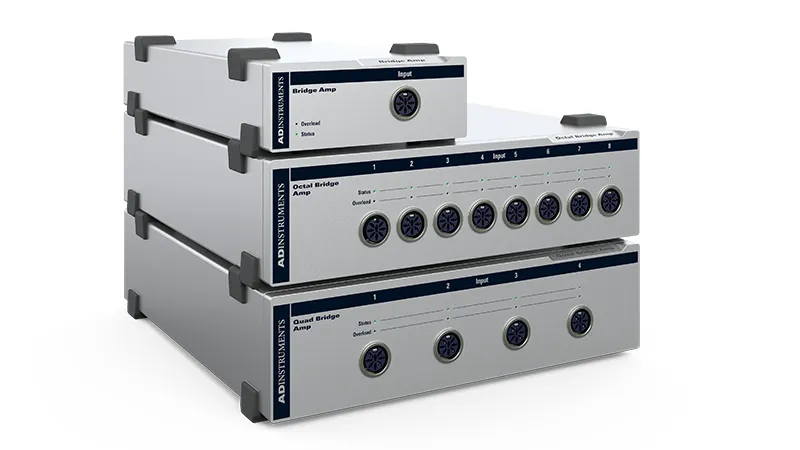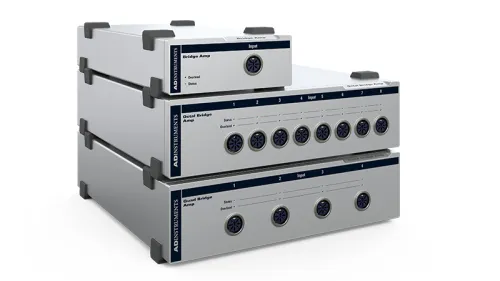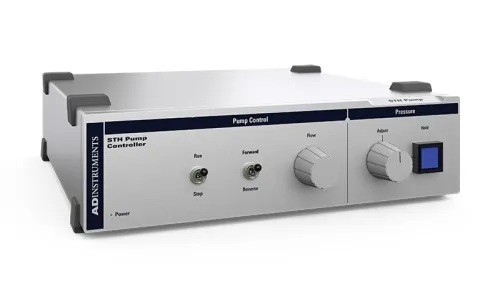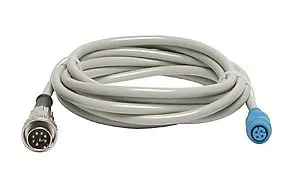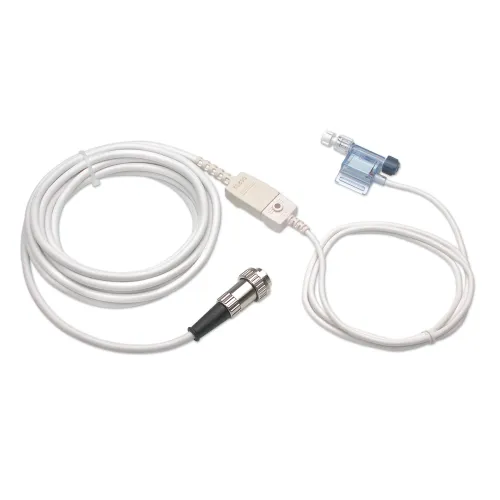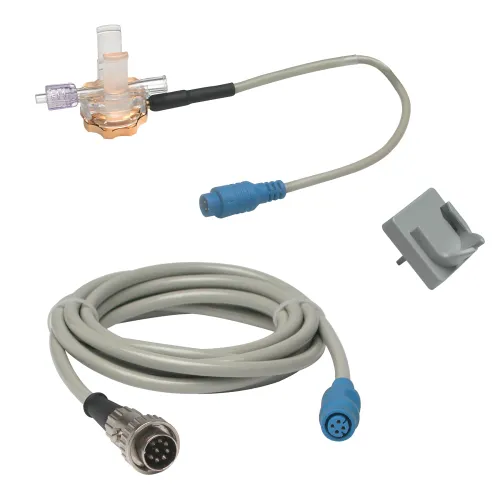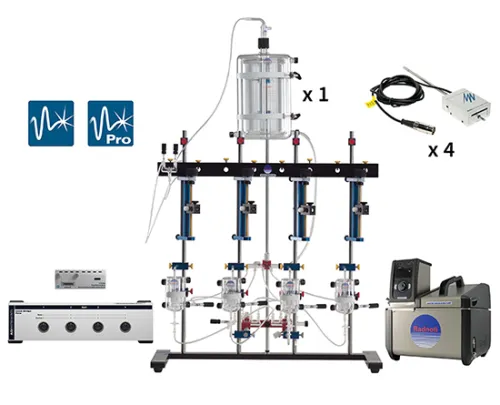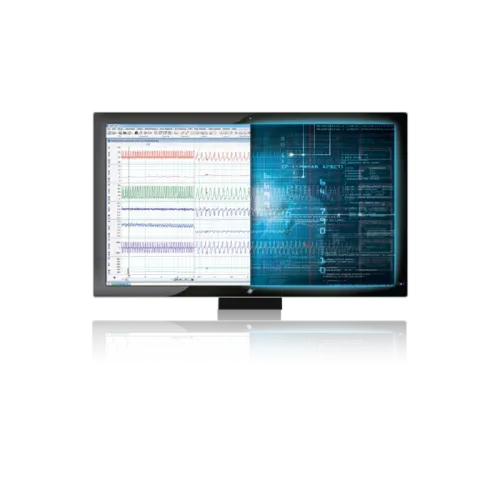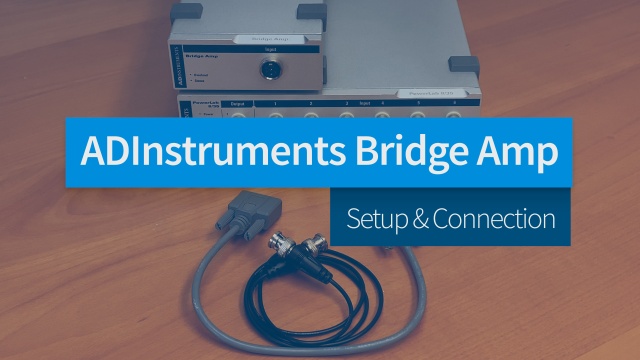Bridge Amps
Pressure, Force & Light Amplifiers
ADInstruments Bridge Amps are single-channel or multi-channel, non-isolated bridge amplifiers designed to allow a C Series Front End Interface or traditional PowerLab to connect to most DC bridge transducers.
Overview
ADInstruments Bridge Amps are single-channel or multi-channel, non-isolated bridge amplifiers designed to allow a C Series Front End Interface or traditional PowerLab to connect to most DC bridge transducers, including commonly available force transducers, temperature probes, displacement transducers, pressure transducers, and similar devices. They are capable of supporting various powered transducers, and certain low impedance unpowered transducers. Various connectors & cables are available to interface a variety of transducers to a Bridge Amp, such as a Grass Adapter Cable for connecting to transducers with Grass connectors.
The Bridge Amps are compatible with a range of ADInstruments and partnering products including:
- Blood pressure transducer
Used to measure arterial and venous blood pressure in animals. A BP (Blood Pressure) Amp is also available for invasive blood pressure measurements requiring full isolation. - Isotonic transducer
Suitable for investigating isotonic contractions of isolated organs and tissue, and measuring small displacements in physiological preparations. - Pressure Catheter + Catheter interface cable
Millar Mikro-Tip® pressure catheters with pressure sensor(s) provides high-fidelity cardiovascular pressures (the heart and vascular system) at the source in small animals. - Physiological pressure transducer
A highly accurate and robust piezo-resistive transducer. - Force transducers
Ideal for isolated tissue studies with our range of tissue and organ baths.
Product Configurations
Related
Research Applications
Cardiovascular Hemodynamics
Non Invasive Blood Pressure
Cardiovascular Hemodynamics
Evoked Responses and Stimulation
Animal Neuroscience
Isolated Organ
In Vitro Pharmacology + Isolated Tissue and Organs
Blood Pressure
Animal Autonomic
HRV
Animal Autonomic
Signals
Key Features
- Low-drift instrumentation amplifier
- Software-controlled zeroing
- Wide amplification range (±200 µV to ±5 V in 14 steps) for use with a wide range of transducers
- A high impedance input (2 x 1 MΩ single-ended, 2 MΩ differential) ensures that the Bridge Amp will not load the transducer
- Overload light to indicate whether the attached transducer is operating correctly or incorrectly
Support
Support Articles
Our Support Articles contain answers to common questions, how-tos, solutions, and documentation.
Training and Workshops
Maximize time and resources with our customized training services delivered at your facility, on your equipment, on your terms.
Related Videos
Details and Tech Specs
Technical
Single, Quad and Octal Bridge Amps (FE221, FE224 & FE228)
Input
- Number of inputs: 1 (single), 4 (Quad) or 8 (Octal); 8-pin DIN
- Input configuration: Differential
- Amplification range: ±200 μV to ±5 V full scale in 14 steps (combined PowerLab and Bridge Amp)
- ±5 V
- ±2 V
- ±1 V
- ±500 mV
- ±200 mV
- ±100 mV
- ±50 mV
- ±20 mV
- ±10 mV
- ±5 mV
- ±2 mV
- ±1 mV
- ±500 μV
- ±200 μV
- Amplification accuracy: ±0.5% (combined PowerLab & Bridge Amp)
- Maximum input voltage: ±10 V
- Input impedance: 2 x 1 MΩ (Single-ended); 2 MΩ (Differential)
- Low-pass filtering: 1 Hz to 2 kHz in eight steps (software selectable)
- Frequency response (-3 dB): 2 kHz maximum at all gains with the 2 kHz filter selected.
- CMRR (differential): 100 dB at 50 Hz (typical).
- Input noise: <1μVrms referred to input at highest gain
Excitation and Zeroing
- Excitation voltage range: 0-20 volts DC (±10 V referred to ground), adjusted by external resistor
- Transducer drive current: ±45 mA maximum
- Zeroing circuitry: Software-controlled, either manual or automatic Internal offsetting range: ±10 V (1 V - 5 V range) ±1 V (100 mV - 500 mV range) ±100 mV (200 μV - 50mV)
- Internal offset resolution: 16 bit (internal DAC) ± 32 000 steps about 0 V.
- 1, 2, 5 V -310 μV/step
- 100 mV, 200 mV, 500 mV - 31 μV/step
- 200 μV to 50 mV - 3 μV/step
Control Port
- I2C port: Power and control bus for front-end units.
- Supports a number of front-ends dependent on the PowerLab.
- Interface communications rate of ~50 Kbits/s.
Physical Configuration
- Dimensions (h × w × d) and Weight:
- Single (FE221): 55 mm × 120 mm × 260 mm (2.2" × 4.7" × 10.2"); 1.2 kg
- Quad (FE224): 55 mm × 240 mm × 260 mm (2.2" × 9.4" × 10.2"); 2.1 kg
- Octal (FE228): 70 mm × 240 mm × 260 mm (2.8" × 9.4" × 10.2"); 2.6 kg
- Power requirements: 0.8 W (FE221); 2.5 W (FE224); 5.0 W (FE228) (without transducer attached)
- Operating temperature range: 5 to 35 °C, 0 to 90% relative humidity (non-condensing)
Safety
- EMC: Approved to EN61326-1:2006 Standard
ADInstruments reserves the right to alter these specifications at any time.
Product Codes
Compatibility
FE221
| Operating System | Recommended Hardware | Alternate Hardware | |
|---|---|---|---|
| LabChart Lightning | Windows / Mac | PowerLab C + Front End Interface | Traditional PowerLab |
| LabChart 8 | Windows / Mac | PowerLab C + Front End Interface | Traditional PowerLab |
FE224
| Operating System | Recommended Hardware | Alternate Hardware | |
|---|---|---|---|
| LabChart Lightning | Windows / Mac | PowerLab C + Front End Interface | Traditional PowerLab |
| LabChart 8 | Windows / Mac | PowerLab C + Front End Interface | Traditional PowerLab |
FE228
| Operating System | Recommended Hardware | Alternate Hardware | |
|---|---|---|---|
| LabChart Lightning | Windows / Mac | PowerLab C + Front End Interface | Traditional PowerLab |
| LabChart 8 | Windows / Mac | PowerLab C + Front End Interface | Traditional PowerLab |
Manuals
Requirements
- PowerLab /SP, /25, /26, /30 or /35
- Either LabChart 6 or later (Windows and Macintosh) or Chart 5.4.2 or later (Windows and Macintosh)
- Scope for Windows (3.7.8 or later) or Scope for Mac (4.0.3 or later)
